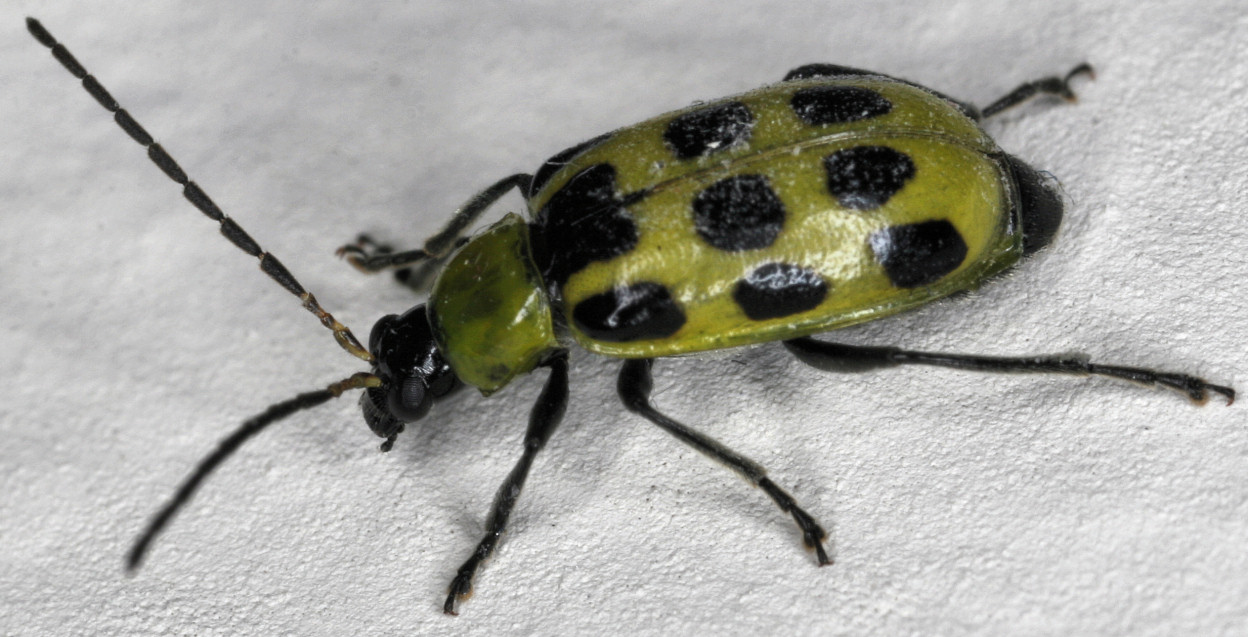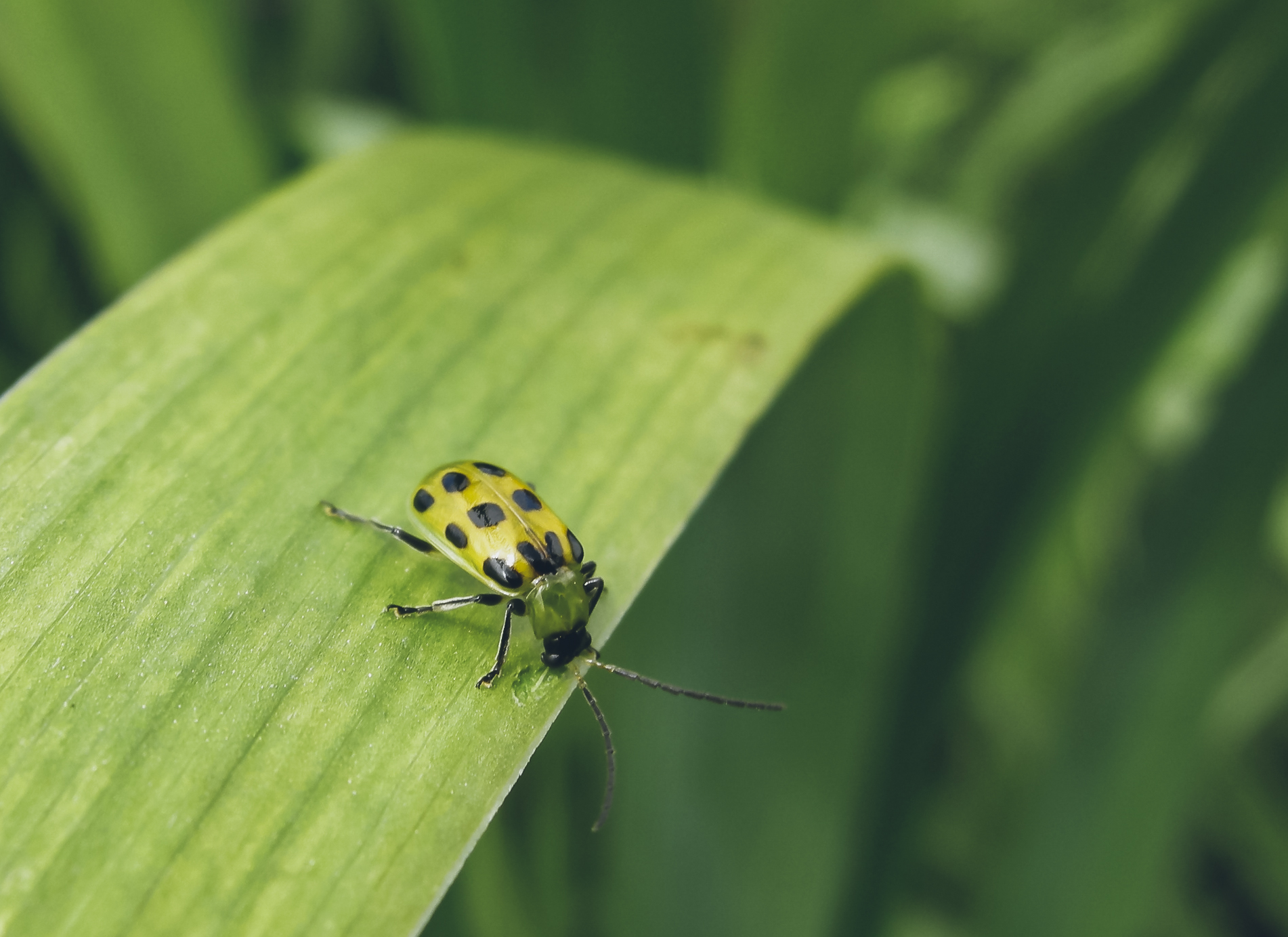Diabrotica undecimpunctata on:
[Wikipedia]
[Google]
[Amazon]

 ''Diabrotica undecimpunctata'', the spotted cucumber beetle or southern corn rootworm, is a species of
''Diabrotica undecimpunctata'', the spotted cucumber beetle or southern corn rootworm, is a species of

 ''Diabrotica undecimpunctata'', the spotted cucumber beetle or southern corn rootworm, is a species of
''Diabrotica undecimpunctata'', the spotted cucumber beetle or southern corn rootworm, is a species of cucumber beetle
Cucumber beetle is a common name given to members of two genera of beetles, ''Diabrotica'' and ''Acalymma'', both in the family Chrysomelidae. The adults can be found on cucurbits such as cucumbers and a variety of other plants. Many are no ...
that is native to North America. The species can be a major agricultural pest insect in North America. Spotted cucumber beetles cause damage to crops in the larval and adult stages of their life cycle. Larvae feed on the roots of the emerging plants, which causes the most damage since the young plants are more vulnerable. In the adult stage the beetles cause damage by eating the flowers, leaves, stems, and fruits of the plant The beetles can also spread diseases such as bacterial wilt and mosaic virus.
Description
The spotted cucumber beetle has three subspecies, each with a different common name: *''Diabrotica undecimpunctata howardi'' – spotted cucumber beetle or southern corn rootworm *''Diabrotica undecimpunctata tenella'' – western cucumber beetle *''Diabrotica undecimpunctata undecimpunctata'' – western spotted cucumber beetle In the adult form, it eats leaves of many crops, includingsquash
Squash may refer to:
Sports
* Squash (sport), the high-speed racquet sport also known as squash racquets
* Squash (professional wrestling), an extremely one-sided match in professional wrestling
* Squash tennis, a game similar to squash but pla ...
, cucumbers, soybean
The soybean, soy bean, or soya bean (''Glycine max'') is a species of legume native to East Asia, widely grown for its edible bean, which has numerous uses.
Traditional unfermented food uses of soybeans include soy milk, from which tofu a ...
s, cotton
Cotton is a soft, fluffy staple fiber that grows in a boll, or protective case, around the seeds of the cotton plants of the genus '' Gossypium'' in the mallow family Malvaceae. The fiber is almost pure cellulose, and can contain minor pe ...
, beans, and corn. Adult beetles lay eggs in the soil near a cucurbit plant. The eggs hatch around mid spring and take 6–9 days to hatch under favorable conditions. The larval stage lasts around 2–3 weeks and the larvae are yellowish and wormlike. After the larval stage insects become pupae, this stage lasts for 6–10 days. After 6–10 days the adult beetle emerges. Adult beetles are greenish-yellow with six large black spots on each elytron
An elytron (; ; , ) is a modified, hardened forewing of beetles (Coleoptera), though a few of the true bugs (Hemiptera) such as the family Schizopteridae are extremely similar; in true bugs, the forewings are called hemelytra (sometimes alterna ...
. They are about 0.5 cm long.
Distribution
This species is found throughout southernCanada
Canada is a country in North America. Its ten provinces and three territories extend from the Atlantic Ocean to the Pacific Ocean and northward into the Arctic Ocean, covering over , making it the world's second-largest country by tot ...
, the continental USA, and the central highlands of Mexico
Mexico (Spanish: México), officially the United Mexican States, is a country in the southern portion of North America. It is bordered to the north by the United States; to the south and west by the Pacific Ocean; to the southeast by Guatema ...
.
References
External links
* * * {{Taxonbar, from=Q1615807 Agricultural pest insects Beetles of North America Galerucinae